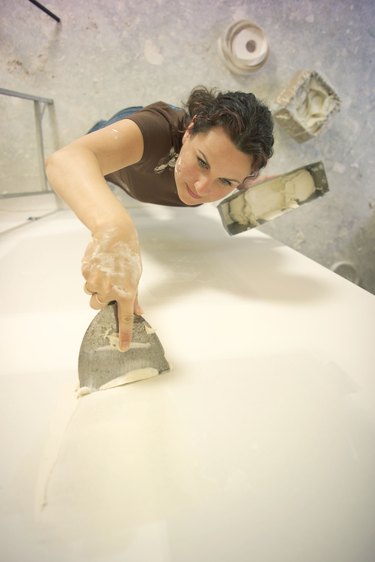
Joint compound is commonly referred to as drywall mud, and several types are sold in home improvement stores. Different types of compounds are needed for different projects, with base layers relying on a thicker, heavier mixture. Finish coats, on the other hand, need a lighter, smoother mixture that can be tooled in a variety of ways to create the result you are looking for.
Taping
Video of the Day
The base layer of drywall mud is used for what is known as taping. This is when a layer of tape is applied to the seams of drywall and then covered with a layer of thick compound that is then smoothed over the tape. You can cover the wall with tile, wallpaper, paint or other materials once it is smoothed.
Video of the Day
Finishing
If you aren't going to use a finish material other than compound on top of your drywall, you need to finish the drywall mud as you see fit. Some homeowners choose to have a troweled finish, where the mud is troweled onto the mud in varying depths. Others choose to have a spackled look, and you can also go with a knockdown texture.
Heavy
Heavyweight joint compound is used for the base layers because it is a denser material. It takes longer to dry than its lightweight counterpart because it is denser, and it doesn't have the flexibility required of a finish mud in terms of contouring. Instead, heavyweight mud is used for taping the seams and for creating what is known as a skim coat for stucco applications.
Light
Lightweight drywall compound is used for finish applications. It doesn't work well as a base layer for seams. Instead, it is used on top of the skim coats and taped areas. It dries faster and is easier to work with because it is lighter, and it can be tooled with various machines and hand tools to create custom textures based on your personal preference. It doesn't have the structural stability to be used as a base layer.